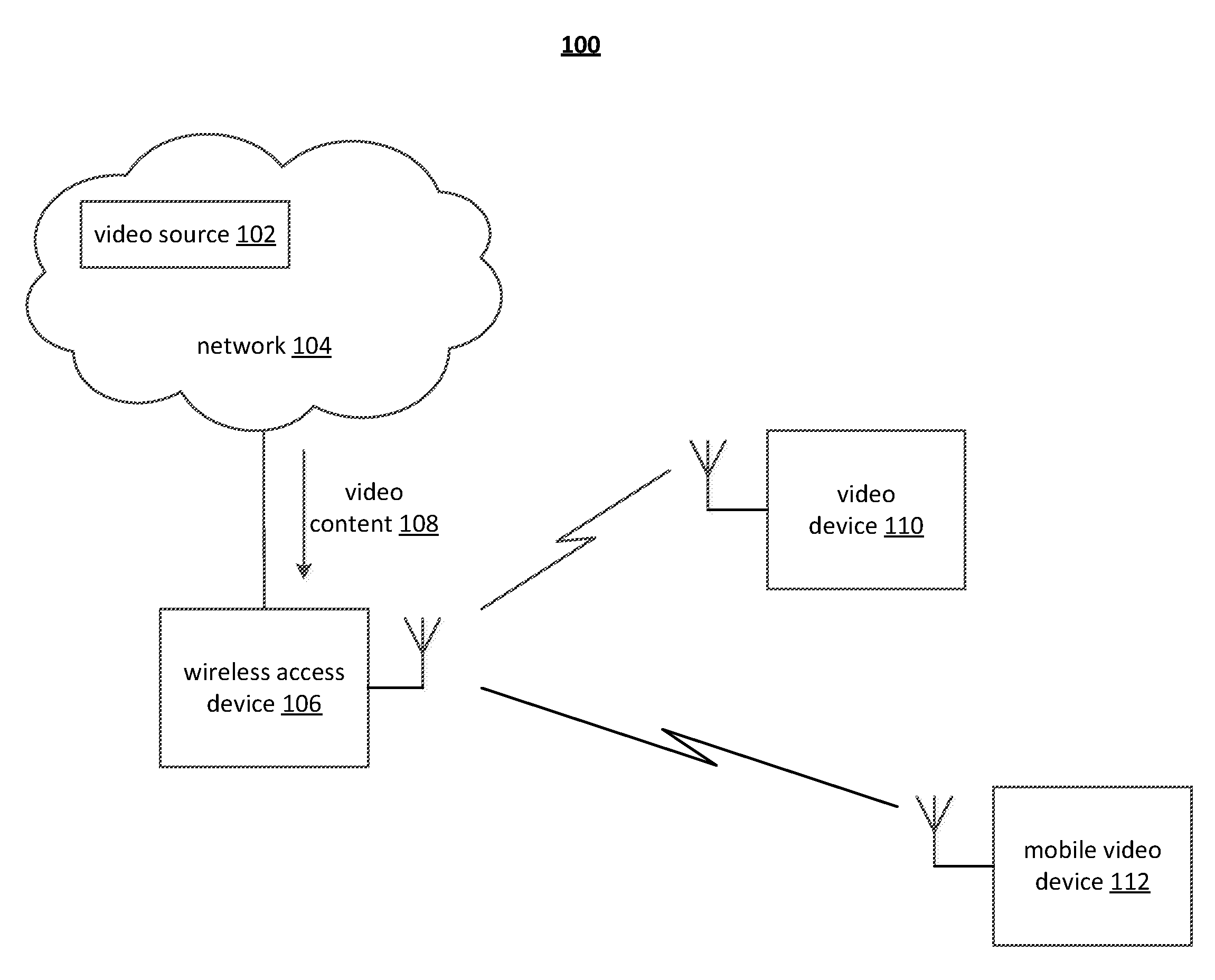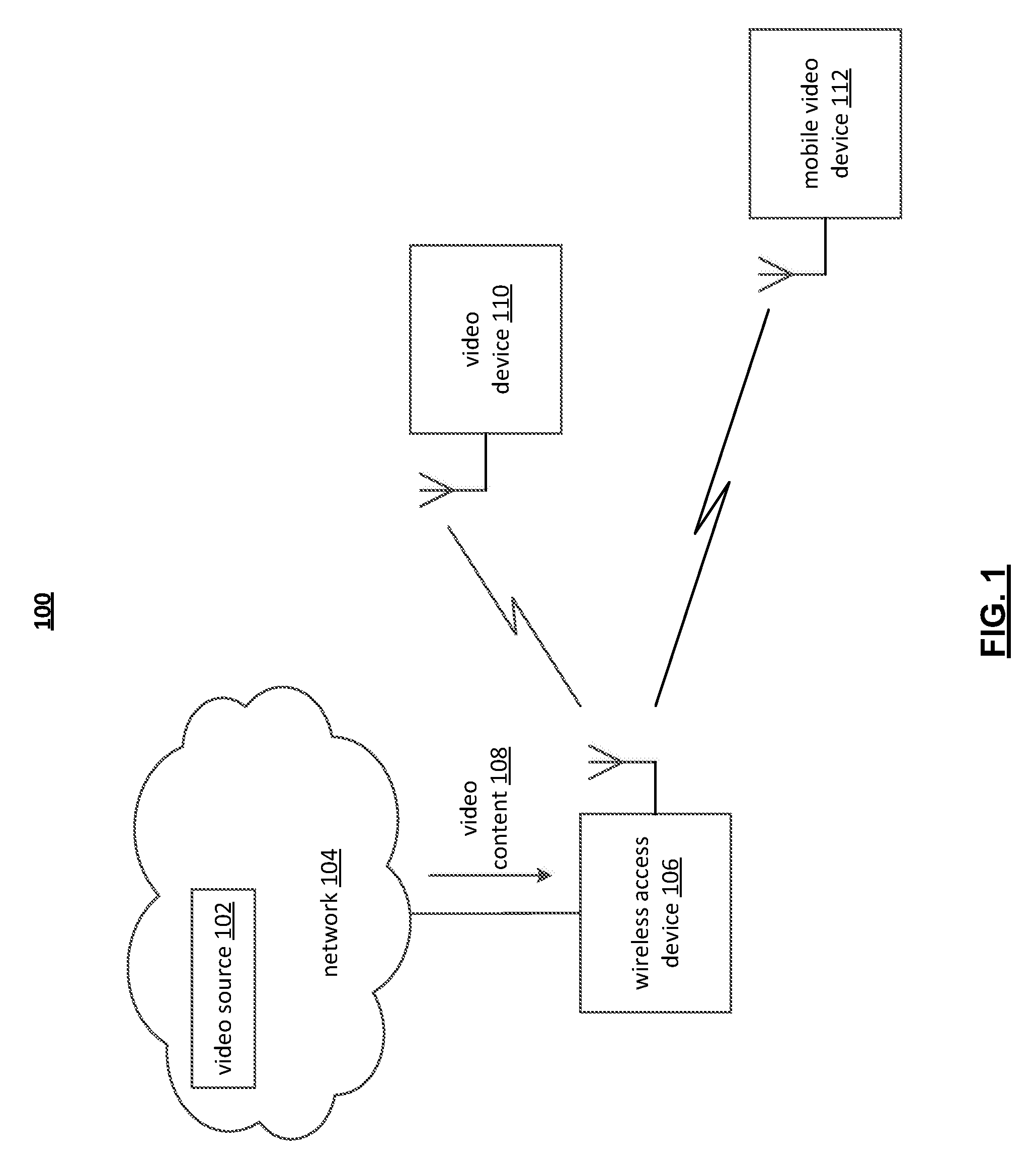Adaptive Video Encoding Based on Predicted Wireless Channel Conditions
a wireless channel and video encoding technology, applied in the field of adaptive video encoding, can solve problems such as redundancy of codes and retransmissions, difficulty in providing an acceptable user experience, and perceived video quality
- Summary
- Abstract
- Description
- Claims
- Application Information
AI Technical Summary
Problems solved by technology
Method used
Image
Examples
Embodiment Construction
[0034]A novel approach is presented herein for optimizing video transmission over a packet based, lossy communication medium / channel in order to improve the end user experience. The novel approach is related to the combination of predictive estimates of channel conditions and adaptive video encoding so that better error concealment, error resilience and bandwidth usage is achievable during, for example, real-time video encoding for packet network transmission.—
[0035]The present invention is generally related to digital video compression, and generally applicable to video compression standards, protocols, and / or recommended practices (e.g., MPEG-4 Part 2, H.264 (AVC), WMV, AVS, RealVideo and Quicktime, among others). While the novel approach presented herein oftentimes employs wireless packet-based transmissions in exemplary embodiments (e.g., UDP / IP), the various aspects and principles, and their equivalents, can also be extended generally to any network transmission (regardless of ...
PUM
 Login to View More
Login to View More Abstract
Description
Claims
Application Information
 Login to View More
Login to View More - R&D
- Intellectual Property
- Life Sciences
- Materials
- Tech Scout
- Unparalleled Data Quality
- Higher Quality Content
- 60% Fewer Hallucinations
Browse by: Latest US Patents, China's latest patents, Technical Efficacy Thesaurus, Application Domain, Technology Topic, Popular Technical Reports.
© 2025 PatSnap. All rights reserved.Legal|Privacy policy|Modern Slavery Act Transparency Statement|Sitemap|About US| Contact US: help@patsnap.com



